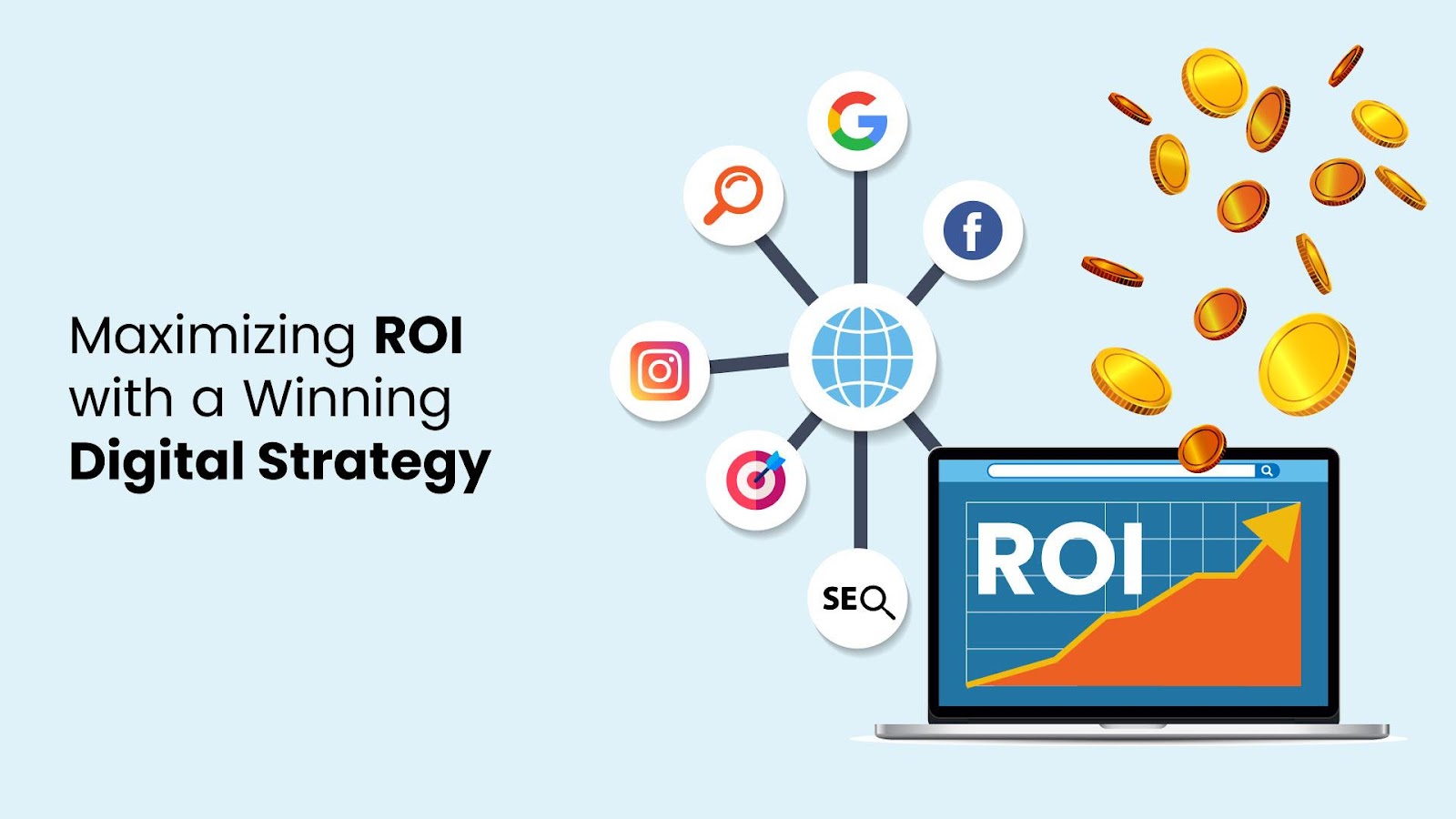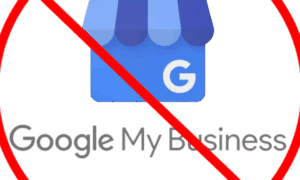If you’re nodding your head in agreement after reading the headline, this guide is tailored just for you.
Unleash the potential of your business with Return on Investment (ROI), a vital performance indicator. Discover the secret of investing your money wisely and determining the profitability of your business endeavors. You can partner with Zib Digital India, a leading digital marketing company in Ahmedabad, to unlock the full potential of your business.
In the world of digital marketing, delve into the depths of ROI calculations to unearth the triumphs and identify areas for improvement. Bid farewell to uncertain marketing decisions as ROI becomes your trusted compass, guiding your future strategies.
ROI, a pivotal Key Performance Indicator (KPI), delivers a reliable measure of your marketing activities’ performance. Armed with your ROI insights, you gain a valuable tool for making critical business decisions, plotting future campaigns, and crafting a strategic marketing budget for forthcoming advertisements.
Peering into the Hearts of Your Ideal Clients
If comprehending your target customers seems like an uphill battle, take solace that you’re not alone.
As per annual survey of Hubspot, just 42% of marketers out of 1,200 attendees know the basic demographic information like their name, gender, and location of their target audience.
Your target audience’s preferences determine your tone of voice, digital marketing channels, and website’s colors and visuals.
Without a clearly defined target audience, achieving a return on investment from your marketing endeavors will be difficult.
To ascertain whether you have a well-defined target audience, consider the following factors:
Psychographics Unleashed: Diving Deeper than Demographics
Understanding your customers’ identity goes beyond basic demographics like age, gender, and location. That actual value lies in their psychographics.
Psychographics reveal what drives your customers—their interests, passions, and beliefs, among other things.
If you’ve been relying solely on demographics, it’s time to dig deeper and define your audience more precisely. It may seem daunting to narrow down your target market, but it allows you to concentrate your efforts where they truly matter.
If you’re thinking, “But I have multiple customer types, so I don’t need to narrow it down,” ensure that you create different content for each audience.
To get started, we recommend engaging with your existing customers. They hold valuable insights that can guide your marketing strategies.
Starting Point: Conversations with Existing Customers
When improving your digital marketing strategy with the help of a digital marketing company, a fantastic first step is to engage with your customers actively. This approach offers several benefits:
- Recognizing patterns in customer behavior.
- Identifying patterns in demographics and psychographics.
- Understanding why they chose your brand over competitors.
- Determining which unique selling propositions (USPs) resonated with your audience.
- Discovering what aspects of your product and business your customers love.
- Uncovering areas for improvement.
Engaging with customers provides valuable insights into where and how to focus your marketing efforts effectively.
Repeatedly, we witness businesses making assumptions about what their customers value most. They invest time and money promoting a particular USP, only to learn that customers were drawn to the brand for an entirely different reason.
How to Prioritize Your Marketing Channels: A Strategic Approach
Our survey found another trend: Marketers often need help prioritizing their marketing channels.
Now, there are two ways of looking at this.
Firstly, if you’ve chosen the wrong social media marketing agency in Ahmedabad, they will not give much importance to social media marketing, leading to poor ROI. They’ve only engaged in social media because they felt obligated to do so—However, they plan to prioritize it this year and expect outstanding returns on their investment.
The second perspective is that they need to achieve better ROI from social media because they need to tailor their approach to resonate with their target customers. This might involve the platforms they use or the content they create.
Consequently, they’re getting disappointing results but still feel compelled to be on social media because many people use it.
With numerous marketing channels available, determining the best ones for your business can be challenging.
Various marketing experts claim that the platforms they succeeded on are the ultimate solution for everyone. However, those platforms might have fit their specific business well.
Other pros suggest being present on as many platforms as possible, assuming that more platforms mean more visibility and sales.
But that’s not true!
It’s much better to focus on high-quality marketing using the channels your target audience uses rather than trying to master every platform.
Utilize the knowledge you’ve gained about your target customers to select your channels wisely. Additionally, examine the data from your existing digital marketing efforts to identify the platforms that have yielded the highest ROI.
The Content Marketer’s Must-Monitor Metrics
Here are some key metrics you should consider when analyzing your content marketing efforts using Google Analytics 4:
Page Views
- The total number of times a page on your website or app has been viewed within a specific date range. Each time a user views a page, it counts as a one-page view.
Drop-in Users or Page Views
- If the number of users or page views has dropped, it could indicate a decline in your content’s ranking compared to previous periods. This could be due to increased competition or changes in the Google algorithm.
Increase in Users or Page Views but No Conversions
- If the number of users or page views has increased, but conversions haven’t, visitors may not be finding what they need to purchase. For example, clear product/service information and shipping details.
Average Engagement Time
- The average time users actively engage with your website or app within a specific date range. This includes activities like scrolling, clicking, and watching videos.
Drop in Average Engagement Time
- If the average engagement time has dropped, it may indicate that your website is challenging to navigate, leading users to leave quickly. Alternatively, visitors might be landing on a page via search but not finding satisfactory answers to their queries, causing them to return to search results.
Increase in Average Engagement Time but Low Conversions
- If the average engagement time has increased, but users aren’t converting, it could mean you’re providing valuable content but not including enough relevant calls-to-action (CTAs).
Conversion Rate
- The percentage of users who have converted on your site. Conversions can be defined as sales, form completions, or sign-ups for a mailing list, depending on your setup in Google Analytics 4.
Drop in Conversion Rate
- If your conversion rate declines, review your CTAs and compare your offering against competitors. They might have a more compelling value proposition or more attractive offers. Instead of copying them, use this information to position yourself as a more appealing option.
High Conversion Rate but Few Return Customers
- If your conversion rate is high, but you’re not getting many repeat customers, explore ways to reconnect with them. Make the most of your mailing list and consider offering subscriptions with discounts as incentives to encourage repeat visits.
Analyzing High and Low-Performing Pages
- Compare pages with high and low conversion rates to identify factors contributing to success. Replicate the strategies and elements that work well on high-performing pages to improve the performance of low-performing ones.
Email Marketing Metrics: Unlocking the Power of Data
Email marketing is a powerful tool for engaging your audience and driving conversions. Here are some of the most important metrics that can help you optimize your email marketing strategy and achieve better results.
1. Open Rate: Measuring Engagement
The open rate is a crucial metric that reveals the percentage of recipients who opened your email. It provides valuable insights into the effectiveness of your subject lines and preview text. If you notice a drop in your open rate, it’s time to take action. Consider these tips:
- Craft compelling subject lines: Study your competitors’ emails and learn from their subject line strategies.
2. Click-Through Rate (CTR): Driving Traffic
The click-through rate measures the percentage of recipients who open your email and click on a link within it. A higher CTR indicates that your content is engaging and successfully driving traffic to your website. If your CTR has decreased or leveled off, consider the following suggestions:
- Optimize your call-to-action (CTA): Ensure your CTAs are compelling and strategically placed throughout the email. Avoid overwhelming readers with a prominent “BUY NOW” button at the top, but instead, include relevant CTAs at strategic points to increase engagement.
3. Conversion Rate: Achieving Desired Actions
The conversion rate measures the percentage of recipients who not only open and click through your email but also take a desired action, such as making a purchase, filling out a form, or downloading an app. To improve your conversion rate, focus on the following strategies:
- Relevant landing pages: Ensure the landing pages you direct readers to align with the content of your email. Don’t send them to generic product pages in the hope of conversions.
Vital PPC Metrics: The Pillars of Pay-Per-Click Success
Here is a glance at some essential PPC metrics to run your ads effectively:
Conversion Rate
The conversion rate measures the percentage of people who click on your ad and subsequently take a desired action, such as purchasing, filling out a form, or downloading an app.
Considerations:
- Review the landing pages your ad links to if your conversion rate is low or has plateaued.
- Ensure your ad directs users to specific product/service pages rather than your homepage to minimize bounce rates.
Click-Through Rate
The click-through rate represents the percentage of people who click on your ad after seeing it. It is calculated by dividing the number of clicks by the number of impressions. For example, if your ad were displayed 1,000 times and received 100 clicks, your click-through rate would be 10%.
Considerations:
- If your click-through rate is low or has plateaued, evaluate your ad creative and compare it against competitors.
- Include unique selling propositions (USPs), high-quality images or videos, and clarify the value proposition.
Cost Per Acquisition
The cost per acquisition denotes the money you spend to acquire a conversion. It is calculated by dividing the total cost of your PPC campaign by the number of conversions received.
Considerations:
- If your cost per acquisition is higher than desired, review your ad targeting to ensure you’re reaching the right audience.
- Consider adjusting your bids to optimize cost efficiency.
Cost Per Click
The cost per click signifies the amount paid each time someone clicks on your ad. It is influenced by the competition for targeted keywords and the maximum bid you set.
Considerations:
- If your cost per click exceeds your desired range, evaluate your ad targeting strategy.
- Adjust bids based on keyword competitiveness and target audience.
Important SEO Metrics: Boosting Your Website’s Performance
Here are some SEO metrics you will find in Google Analytics 4:
Organic Traffic: Drive Quality Visitors to Your Website
- Enhance your website’s content and optimize keywords to maximize organic traffic.
- Stay ahead of changing search trends and adapt your content to match evolving consumer searches.
Keyword Rankings: Boosting Visibility in Search Engines
- Monitor how well your website ranks in search engine results for specific keywords.
- Optimize your SEO strategies to improve keyword rankings relevant to your business.
Search Visibility: Expand Your Online Presence
- Measure your website’s overall visibility in search engines.
- Evaluate keyword rankings across your target keywords and calculate the percentage of potential visitors finding your site.
Organic Conversions: Transforming Visitors into Customers
- Measure the number of visitors from search engines who take desired actions on your website.
- Desired actions include purchasing, filling out a form, or subscribing to a newsletter.
Referring Domains: Harness the Power of Backlinks
- Referring domains indicate the number of external websites linking to your website.
- Backlinks from high-quality websites significantly impact search engine rankings.
Social Media Metrics: The Numbers Behind the Noise
In the fast-paced world of social media, tracking and analyzing your metrics is crucial to ensure your brand’s success. You can optimize your content strategy and enhance your online presence by understanding key metrics such as reach, impressions, and engagement.
1. Reach
Reach refers to the number of unique users who have seen your social media content. It’s a valuable metric that measures the extent of your content’s visibility. Here’s how to boost your reach:
- Aim for diverse content that appeals to a broad audience.
- Stay updated with current trends and adapt them creatively to promote your brand.
- Explore design trends that have a longer lifespan to maintain a fresh and engaging aesthetic.
2. Impressions
Impressions represent the number of times your social media content has been displayed on users’ screens. To maximize impressions, consider the following:
- Focus on creating visually compelling content that stands out in crowded feeds.
- Encourage users to share your content, increasing impressions from multiple views.
- Engage with your audience through captivating captions and headlines that pique their interest.
3. Engagement:
Engagement refers to how users interact with your social media content, including likes, comments, shares, retweets, clicks, and direct messages. To maximize engagement, partnering with a reliable social media marketing agency in Ahmedabad would be a significant step.
They can help you create compelling content and develop effective strategies to encourage engagement with these strategies:
- Craft content that resonates with your target audience and sparks their curiosity.
- Prompt users to take action by asking questions or encouraging them to share their thoughts.
- Actively respond to comments and messages to nurture the community and encourage further engagement.
AI and Marketing: A Dynamic Duo for Strategic Success
The impact of artificial intelligence on marketing has become the hottest topic of discussion. AI tools have been advancing rapidly, with groundbreaking developments occurring every few weeks and even days.
Content Marketing: The Leading Domain for AI Application
Content marketing has emerged as the most prominent field where AI is utilized. Remarkably, marketers are leveraging AI to assist them in generating content.
Marketers employ AI tools like Surfer, Jasper, and ChatGPT to provide content outlines and inspiration.
Expanding Possibilities: AI as a Transformative Tool
AI offers a remarkable capability to transform existing content into various tones or cater to different target audiences.
Let’s say you want to know how a microwave oven works. You can ask ChatGPT to explain it to you in a simplified way.
Here’s the technical explanation: “A microwave oven uses electromagnetic waves, called microwaves, to cook food. It has a magnetron that generates the microwaves, which are then directed into the oven’s cooking chamber. The microwaves bounce around inside the oven and are absorbed by the food, causing the water molecules in the food to vibrate. These vibrations produce heat, which cooks the food evenly and quickly.”
Let’s ask ChatGPT to rephrase it for a 5-year-old: “A microwave oven is like a magic box that makes our food hot fast. Inside the box, a special thing sends invisible waves that make the food dance and get warm. These dancing waves make the food yummy and ready to eat in no time!”
This example illustrates how AI can simplify complex concepts and make them easier to understand, even for young children.
Evolution of Google’s Stance on AI Content
A significant concern among marketers has been the anticipated stricter parameters from Google regarding AI-generated content. In August 2022, Google initially hinted at penalizing such content.
However, they have since changed course (coincidentally after introducing their AI tools) and announced that they will “reward high-quality content, regardless of its origin.”
Navigating Challenges: Tone of Voice and AI’s Reliability
The main challenges associated with AI involve aligning its content production with your business’s unique tone of voice. Furthermore, there is a risk of AI occasionally including incorrect facts or fabricating sources.
Consequently, human intervention remains crucial in working with AI tools. It’s important to note that AI only autonomously generates high-quality content if provided with exceptional prompts.
Maximizing Your SEO Strategy for Effective Results
SEO (Search Engine Optimization) remains a vital digital marketing channel for businesses. In fact, 64% of marketers say that SEO is one of their most crucial marketing efforts.
To ensure your SEO efforts are fruitful and your budget well-spent, follow these key strategies:
Conduct Comprehensive Keyword Research:
- Identify target customers and goals to shape your keyword research.
- Tailor content to align with the chosen keywords. Shorter keywords suit the homepage, category, and product/service pages.
- Craft clear and concise pages to appeal to users further down the sales funnel, facilitating conversion.
On-Page Optimization:
- Ensure Meta titles and descriptions are relevant to selected keywords (avoid generic terms like “home” for the homepage).
- Update copy to incorporate target keywords and their variations.
- Analyze search results for your target keywords to gauge the best content format. Enhancing user-friendliness can yield significant improvements.
Enhance User-Friendliness:
- Improving website usability positively impacts SEO.
- Google considers average engagement time as a ranking signal. Users who struggle to find what they need on your site are more likely to leave quickly.
- Focus on making your website intuitive and user-friendly to encourage more extended engagement.
Local SEO Strategies:
- Local businesses should incorporate local SEO strategies into their digital marketing efforts.
- Check out our founder Tim’s video on creating an exceptional local SEO campaign for more insights.
Blog Content Optimization: The Roadmap to More Leads
Many businesses need help generating leads from their blogs, despite recognizing their significance in attracting search traffic and impressing customers. However, with a strategic approach to content creation and the inclusion of effective call-to-actions (CTAs), it is possible to convert blog traffic into valuable leads.
Know Your Audience and Their Buyer Journey
To maximize the impact of your blog content, it’s essential to understand your target audience and identify which stage of the buyer journey they are in. Tailor your CTAs accordingly.
- For visitors ready to convert, such as those on a service page, include CTAs that prompt them to book a consultation.
- Conversely, a conversion-focused CTA would be ineffective in beginner guide blogs, where visitors are likely at the initial stage of their buyer’s journey.
Analyze Top-ranking Content
Gain insights from the content appearing in search results for your target keyword. These top-ranking pages have already succeeded in satisfying searchers. Here’s how you can leverage this information:
- Identify the content types Google favors, such as blog posts enriched with downloadable resources, calculators, and infographics.
- Emulate successful content strategies in your blog to enhance visibility and attract more leads.
Discover the Hidden Gems in Your PPC Campaigns
PPC advertising has a reputation for being expensive and ineffective, but we are here to change that perception. Here’s how you can effectively drive desired results from your PPC strategy:
Tailor Your Platform Selection
Refrain from relying on familiar platforms for your PPC campaigns. Instead, consider the following factors when choosing where to run your ads:
A. Sales Funnel Stage:
Determine the sales funnel stage you want to target with your ads. This will help you identify the most effective platforms for reaching your desired audience.
B. Platform Performance:
Research to find out which platforms have yielded positive results for businesses like yours. For example, the Instagram platform has been effective for 50% of marketers, making it a practical choice for reaching and targeting consumers directly.
C. Audience Relevance:
Consider whether your chosen platforms align with your audience’s preferences and online habits. Just because you’ve made purchases through Facebook ads doesn’t guarantee the same response from your audience.
Test and Refine Your PPC Campaigns
Even if you’ve chosen the right platforms, you must ensure your ads resonate with your audience. Follow these steps to optimize your campaigns:
A. Analyze Competitor Ads:
Study the ads being run by your competitors. Search for your targeted keywords, observe the advertisements, or explore your competitors’ presence in the Meta Ad Library. This research will provide insights into successful strategies and elements to incorporate into your ads.
B. Highlight Unique Selling Points:
If your competitors emphasize their unique selling points (USPs), ensure your ads do the same. Capitalize on what sets you apart from the competition.
C. Showcase Your Product:
If your competitors place their product front and center, follow suit. Display your product prominently in your ads to grab the attention of potential customers.
Brownie Points: Dive into the wave of short-form video content
Short videos are in high demand. They cover a variety of content, like brand challenges, customer testimonials, teasers for products or events, user-generated content, demos, tutorials, and educational videos.
According to Wyzowl, 87% out of 528 marketers believe that short form videos have helped them increase sales. These videos boost sales directly and help create brand awareness and loyalty.
Consumers are more likely to purchase when they feel a genuine connection with your brand and the people behind it.
Popular platforms for short videos include Instagram, TikTok, and YouTube.
How to Strategically Plan Your Marketing Budget
Let us alleviate your worries if you’re concerned about reducing expenses because of uncertain economic times. Many marketers are not decreasing their spending even though a recession is on the horizon.
If your department is experiencing budget reductions, highlight this statistic to your leadership team. They must understand that most businesses need to cut back on marketing activities.
Apart from that, you can follow these practices to optimize your budgeting:
Analyze Previous Budget Performance
- Evaluate the effectiveness of past marketing initiatives.
- Identify successful campaigns and areas that require improvement.
- Consider allocating more budget to proven high-performing strategies.
Choose the Right Marketing Channels
- Assess the channels that are most relevant to your target audience.
- Consider a mix of online and offline channels for optimal reach and impact.
- Allocate the budget strategically across the chosen channels.
Allocate Resources for Creative Content
- Content is king, so allocate a budget to create compelling and engaging content.
- Invest in quality visuals, videos, and written materials that resonate with your target audience.
- Consider outsourcing content creation if necessary.
Final Pearl of Wisdom
In this blog conclusion, we delve into the reasons behind the failure of 65% of businesses to achieve ROI from digital marketing. Understanding these factors can help us navigate the challenges and find success in our marketing efforts.
Companies can increase their chances of achieving ROI from digital marketing by developing well-defined strategies, understanding target audiences, and utilizing data-driven insights. Successful implementation of these practices can pave the way for sustainable growth and improved profitability.
Remember, by investing in the expertise of a digital marketing company in Ahmedabad like Zib Digital India, you can experience continuous evaluation and adaptation. By staying informed, embracing innovation, and leveraging the full potential of various marketing forms, businesses can unlock success in the digital realm.



































